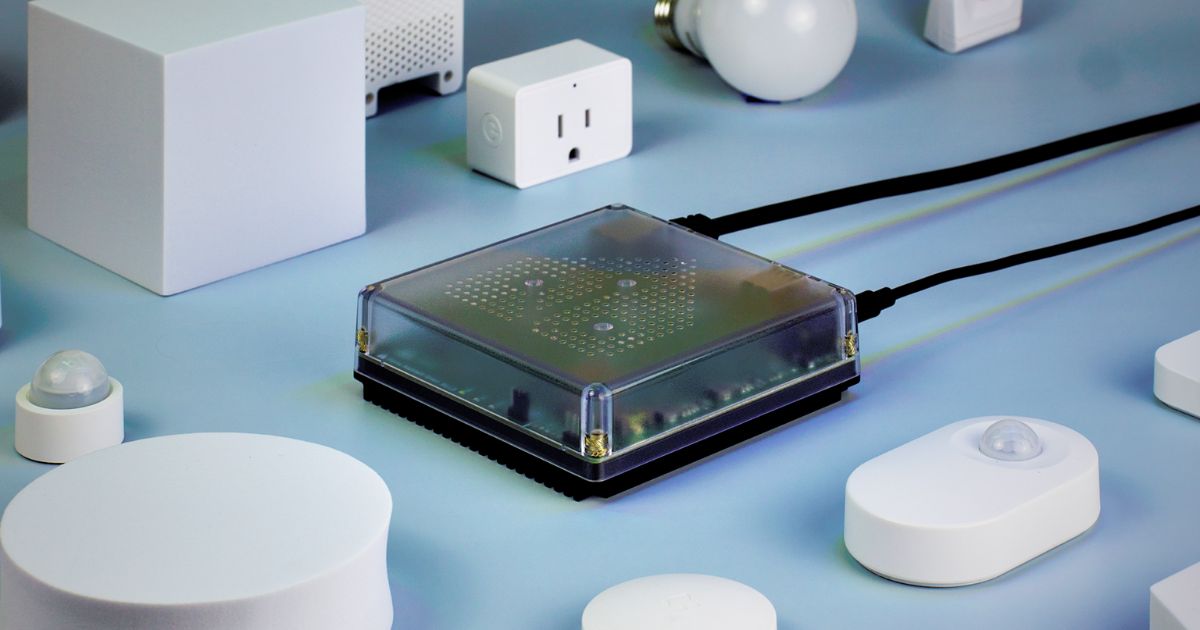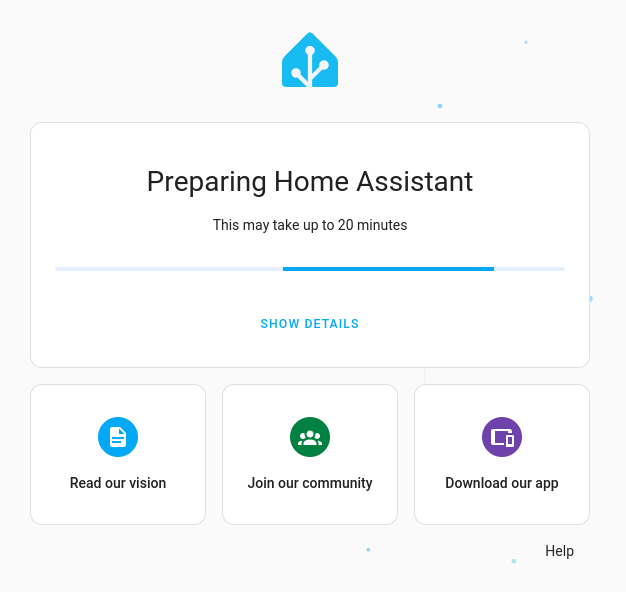Blog
Nabu Casa at the Matter Member Meeting
TL;DR: We represented Home Assistant, our community, and the Open Home vision at the Matter member meeting in Geneva. We’re hosting a live stream to talk Matter in January to update you about our progress and answer your questions. Leave your questions in the comments below!
Two weeks ago me, Marcel van der Veldt, and Stefan Agner, traveled to Geneva to represent Home Assistant, our community and the Open Home Vision at the Member Meeting of the Connectivity Standards Alliance (CSA). This is an important meeting where companies from all over the world meet to talk and decide about the Matter standard and how to implement it.
(Matter is the new smart home standard that promises to make everyone’s smart home devices work with each other across platforms and ecosystems, locally and privately. It’s being developed by the CSA, which is also responsible for Zigbee).
 Stefan and Marcel
Stefan and Marcel
We were able to attend because Nabu Casa
Home Assistant Green is now available
We’re happy to tell you that Home Assistant Green is now available from most of the distributors in our global network. If you were waiting for a store closer to your location to sell Home Assistant Green, check out our distributor list now to find one near you:

Removal of MyQ integration
TL;DR: The MyQ integration will be removed from Home Assistant in release 2023.12 on December 6, 2023. Chamberlain Group, the owners of MyQ, have released a public statement saying they will continue blocking access to third-party apps, like the MyQ integration. For current MyQ users we recommend ratgdo
If you own a garage door opener from Chamberlain or Liftmaster, you are probably familiar with MyQ. It’s a cloud-based smart home brand owned by Chamberlain Group, best known for its smart garage devices. MyQ is also currently one of the most problematic integrations for Home Assistant users. The MyQ garage door opener integration has, for the past months, been in a state of constant repair as the integration breaks, is fixed, and then breaks again. This is a direct result of actions taken by MyQ to block access from third parties.
Read on →2023.11 To-do: Add release title
Home Assistant 2023.11! 🎃
It seems like I forgot to come up with a release title for this release and left a placeholder in the title. If I only could have it on a to-do list somewhere… 🤔
Before we dive into this pretty massive release, I want to quickly look back at two amazing things that happened in the past month.
First, we presented chapter 4 of the Year of the Voice,
which introduced the new wake word feature in Home Assistant. This really
brings the voice assistant experience to the next level, and we are super
excited about it! Like have you seen the R5-based voice assistant droid
Second, we had a security audit performed on Home Assistant by one of the top
security auditors in the world! You can read all about it in the blog post.
A big shout out to everybody subscribed to Home Assistant Cloud
Alright, about this release! It is huge! I love the tile card, and the ability to easily customize the information it shows now is just. 🤩 But mostly, I’m super stoked about the new to-do lists, which will probably become a very central part of my household.
Enjoy the release!
../Frenck
Read on →Security audits of Home Assistant
Summary: Home Assistant had two security audits done as part of our regular security assessments. You are safe. No authentication bypasses have been found. We did fix issues related to attackers potentially tricking users to take over their instance. All fixes are included in Home Assistant 2023.9 (released on September 6, 2023) and the latest Home Assistant apps for iOS and Android. Please make sure you’re up-to-date.
Security is very important to us at Home Assistant and Nabu Casa. Being open source makes it easy to let anyone audit our code—and based on reported issues—people do. However, you also need to hire people to do an actual security audit to ensure that all the important code has been covered.
Subscribing to Home Assistant Cloud
Cure53 found issues in Home Assistant, 3 of which were marked as “critical” severity. The critical issues would allow an attacker to trick users and steal login credentials. All reported issues have been addressed as part of Home Assistant 2023.9, released on September 6, 2023. No authentication bypass issues have been found. According to Cure53’s report:
The quality of the codebase was impressive on the whole, whilst the architecture and frameworks deployed in all relevant application areas resilient design paradigms in general. Frontend security in particular exhibited ample opportunities for hardening, as compounded by the Critical associated risks identified. Nonetheless, once these have been mitigated, an exemplary security posture will certainly be attainable.
In August, the GitHub Security Lab
We want to thank both teams for their audits, reported issues, and keeping our users safe 🙏
All found issues have been added to our security page. This page has been updated to include an ongoing timeline of reported issues, who disclosed it, and a link to the issue report on GitHub.
If you think you have found a security issue, check out our security page on how to report this to Home Assistant.
Expected support for Home Assistant OS on the Raspberry Pi 5
On September 28, Raspberry Pi surprised the world (and, truthfully, us) by announcing the Raspberry Pi 5
According to our analytics, a third of all Home Assistant users currently use the Raspberry Pi 4 as their dedicated Home Assistant system. In fact, Home Assistant OS is the third-most installed OS
As we have not been part of Raspberry Pi’s beta program, adding support for the Raspberry Pi 5 to Home Assistant OS has not started yet. At this point, it is still hard to estimate how much work it will be, but we want to stress that this is a major task that we want to get right. While beta versions will be released early, we currently do not expect a stable release to come out until the end of this year or early 2024.
That means you cannot run Home Assistant OS on the Raspberry Pi 5 at launch. Alternative installation methods that do not use Home Assistant OS are available, but we only recommend those for advanced users. If you currently use Home Assistant OS and have pre-ordered a Raspberry Pi 5, we recommend waiting for a stable release for the Raspberry Pi 5 to come out before moving your installation.
For owners of Home Assistant Yellow, Raspberry Pi has yet to make any statement about a potential Compute Module 5 based on the Raspberry Pi 5. We can only indicate compatibility with Home Assistant Yellow once they provide information about a new Compute Module and its specifications. We also want to point out that there were 16 months between the release of the Raspberry Pi 4 and the release of the Compute Module 4. For those currently looking for Compute Module 4 to complete their Home Assistant Yellow kits, we are happy to report that Compute Module 4 has become more widely available again, as seen on rpilocator
Update (Oct 19th): We received Raspberry Pi 5 boards earlier this week and are investigating support options for Home Assistant OS now. Thank you to the folks at Raspberry Pi! For those interested in technical discussions about Raspberry Pi 5 support or just would like to follow the progress, we’ve started a Raspberry Pi 5 specific thread on GitHub Discussions
Home Assistant OS 11: Low-latency scheduler and VM snapshot improvements
With Home Assistant OS 11, there is no big or flashy feature to highlight. Rather, there are a lot of small improvements and little gems. The increased use of Bluetooth has uncovered quite some issues on Home Assistant OS; some of which we are still working on. One of the main issues in Home Assistant OS 10 was caused by a bug in the processing of Bluetooth advertisements in the Linux kernel’s Bluetooth stack itself. With the help of our community, we managed to reproduce, pinpoint, and provide the necessary hints to the Bluetooth developers. This led to a fix in the Bluetooth stack not only for Home Assistant OS and Supervised users but for the Linux community in general 🎉 (see issue https://github.com/home-assistant/operating-system/issues/2535
We’ve also worked on the landing page which is bundled with Home Assistant OS 11. The landing page is visible to the user when starting a fresh installation of Home Assistant OS for the first time. It features the same new look as the Home Assistant Core onboarding flow, and tracks issues during the bootstrapping phase, automatically displaying errors if they occur during that critical setup phase.

The new landing page shipped with Home Assistant OS 11
This month we at Nabu Casa got a new addition to the Home Assistant OS team: With Jan Čermák
And finally: Home Assistant OS 11 will be pre-installed in the next batch of Home Assistant Green 🎉
Enjoy the latest version of Home Assistant OS!
Stefan
Read on →Removal of Mazda Connected Services integration
On October 11, 2023, we were informed that an open-source contributor received a cease and desist letter from Mazda North American Operations (Mazda) regarding his library to connect with Mazda services. This library was used by the Home Assistant integration Mazda Connected Services, which he also maintained. A DMCA notice
The contributor has complied with the cease and desist letter. The library is no longer available, and the Mazda Connected Services integration has been removed from Home Assistant in the 2023.10.2 patch release of Home Assistant released on October 12, 2023.
Home Assistant is disappointed that Mazda has decided to take this position. We’re also sad that Mazda’s first recourse was not to reach out to us and the maintainer but to send a cease and desist letter instead.
We invite Mazda to speak with us about this topic. We would love to have an open and constructive discussion about the potential that a Home Assistant integration has for them and their customers. We genuinely believe there is a common ground between us and Mazda when it comes to enabling the owners of their cars to explore the possibilities of their own data.
After all, other car manufacturers do see this potential. For example, Tesla has recently released official API documentation
Year of the Voice - Chapter 4: Wake words

This year is Home Assistant’s Year of the Voice. It is our goal for 2023 to let users control Home Assistant by speaking in their own language.
We’ve got great news: wake words are finally here! After 4 chapters, we now have the final building block for voice in Home Assistant.
In Chapter 1, we started with text commands such as “turn on the kitchen light” and “open garage door”. We now support 56 languages
Chapter 2 introduced audio for voice commands: both speech-to-text and text-to-speech. This included local options for maximum privacy as well as support for Home Assistant Cloud for incredible speed and language coverage. Lastly in Chapter 3, we added the ability to set Home Assistant as your default assistant on Android phones and watches.
For Chapter 4, we’ve now added wake word processing inside Home Assistant. Wake words are special words or phrases that tell a voice assistant that a command is about to be spoken. Examples are: Hey Google, Hey Siri or Alexa.
Home Assistant’s wake words are leveraging a new project called openWakeWord
To try wake words today, follow our updated guide to the $13 voice assistant.
To watch the video presentation of this blog post, including live demos, check the recording of our live stream.
2023.10: New looks and more tile card features!
Home Assistant Core 2023.10! 🎉
October! 🎃 It means we’ve just celebrated our birthday; we are now 10 years old! 🎂 In case you’ve missed our
birthday YouTube stream
Even more exciting news, as this is Home Assistant’s year of the voice: Chapter 4 of this endeavor has been announced and will be streamed live on YouTube
As for this release, because of all of the above, it is a bit smaller than usual in terms of features. I promise that chapter 4 is going to make it all worth it. Yet, it contains tons of updates, bug fixes, and a couple of beautiful new features for the tile card! 🤩
Enjoy the release!
../Frenck
Read on →
